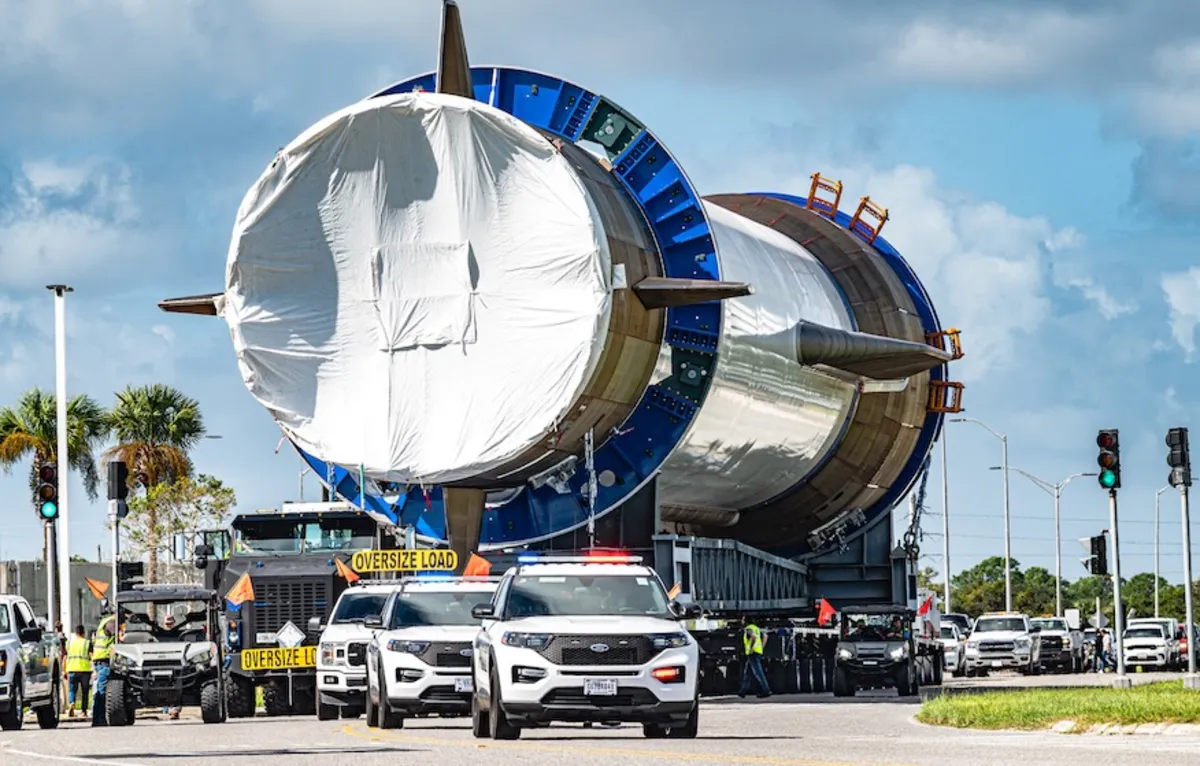
Blue Origin is making significant progress with its New Glenn rocket as it prepares for its second launch. On Wednesday morning, teams successfully rolled the impressive 189-foot-tall (57.5 m) rocket from its facilities at Rocket Park, located near the Kennedy Space Center Visitor Complex, to Launch Complex 36 at Cape Canaveral Space Force Station. This significant movement was announced by the company around 8:30 a.m. EDT (1230 UTC), coinciding with a suborbital New Shepard launch that was simultaneously sending six space tourists into the skies from West Texas.
The New Glenn rocket, affectionately named ‘Never Tell Me the Odds’—a tribute to the iconic Star Wars line—will play a crucial role in NASA’s upcoming EscaPADE mission. This mission aims to explore Mars and is set to launch twin satellites named 'Blue' and 'Gold.' These satellites were transported from Rocket Lab’s facilities in Long Beach, California, to Florida in September for final processing ahead of their launch. Although a specific launch date has yet to be announced, expectations are set for early November.
Originally, the EscaPADE mission was slated to coincide with the inaugural flight of New Glenn. However, as timelines shifted, it became clear that the rocket would not be ready for its intended launch in October 2024. The upcoming launch, also referred to as New Glenn 2 or NG-2, follows approximately ten months after the inaugural flight of New Glenn in January, which successfully carried a demonstration payload of the Blue Ring spacecraft. Future iterations of this spacecraft are designed to accommodate and deploy multiple payloads while executing necessary orbital maneuvers.
During the recent International Astronautical Congress (IAC) held in Sydney, Australia, Pat Remias, Blue Origin’s vice president of space systems development, emphasized the company's commitment to recovering the booster during the upcoming flight. This effort mirrors SpaceX's strategy, as Blue Origin employs a marine vessel to serve as a landing pad for the first stage boosters. Previously, Blue Origin attempted to land its inaugural booster, ‘So You’re Telling Me There’s A Chance,’ on a vessel named ‘Jacklyn,’ but the attempt did not succeed.
The Federal Aviation Administration (FAA) reported that the mishap was primarily due to the New Glenn’s first stage failing to restart its engines, thus preventing a reentry burn and leading to the loss of the stage. Following the conclusion of the mishap investigation led by Blue Origin in late March, the FAA confirmed that the company identified seven corrective actions to prevent future occurrences. The FAA will oversee the implementation of these corrective measures before the launch of the New Glenn-2 mission.
Blue Origin is placing considerable confidence in its ability to land the next booster successfully. During the IAC, Remias stated that if the recovery is successful, the booster will be utilized in the company’s third mission, which is set to carry the first Blue Moon Mark 1, an uncrewed lunar lander. "We will use that first stage on the next New Glenn launch," Remias affirmed, expressing optimism regarding the mission's success.
For context, SpaceX managed to land its first booster on December 21, 2015, about 5.5 years after its initial flight. However, it wasn't until April 8, 2016, that SpaceX achieved its first successful landing on one of its drone ships, and the re-flight of a booster didn’t occur until March 30, 2017. This comparison highlights the ambitious goals of Blue Origin as it seeks to enhance its operational capabilities.
In addition to its upcoming launch preparations, Blue Origin is also ramping up production efforts for its New Glenn rockets. Notably, the company has made significant strides in manufacturing the second stages of the rocket. The upper stage for the NG-2 mission underwent a successful test fire at a stand near the launch pad at LC-36 back in April, followed by a similar test for the third upper stage in August. The upper stage of New Glenn is powered by two BE-3U engines, utilizing a combination of liquid oxygen and liquid hydrogen, while the rocket’s booster is equipped with seven of Blue Origin’s BE-4 engines, which are fueled by a mix of liquid methane and liquid oxygen.